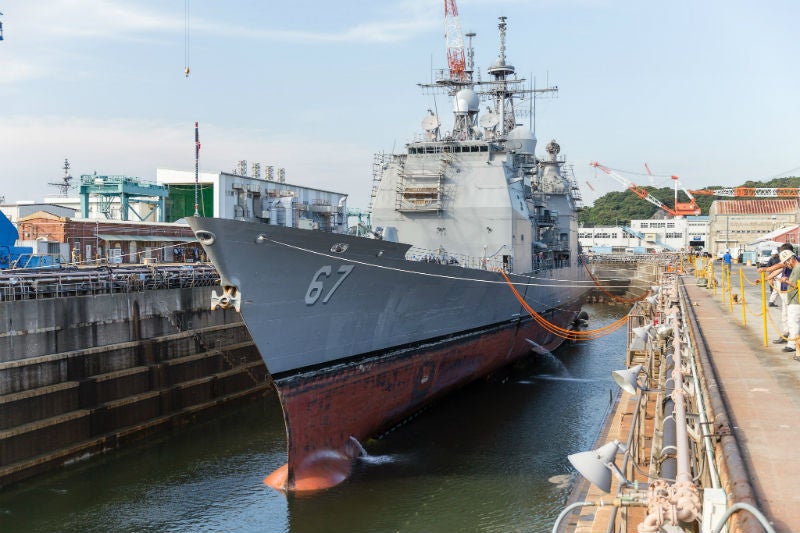
The US Naval Seas Systems Command (NAVSEA) 04×3’s Tactical Innovation Implementation Lab (TIIL) has led the development of a new cold spray technique, which can enhance routine ship maintenance and extend the life of older ship components.
The cold spray process works by blasting a combination of metal powder and inert gas – usually hydrogen or nitrogen – at a ship’s component at supersonic velocity. The impact flattens the particles and welds them to the component, essentially creating a brand new part, expanding its lifespan by years.
Cold spray refers to the low temperature at which the bonding process occurs, normally 212°F to 930°F. Traditional welding methods start at around 5,000°F.
It is the high velocity at which the powder is fired at the component that causes bonding, not the high heat, which means that the metallurgical properties of a part are not distorted or damaged. Cold spray is also useful in bonding more fragile non-metals, such as ceramics.
TIIL director Janice Bryant said: “This process allows us to take something worn and reconfigure it to something new.”
TIIL’s Cold Spray Sprint
From 15-16 January, the TIIL led a Cold Spray Sprint exercise in order to advance the implementation of cold spray into ship maintenance, at US Naval Undersea Warfare Center (NUWC) Keyport’s Advanced Technology Innovation Center in Washington State.
How well do you really know your competitors?
Access the most comprehensive Company Profiles on the market, powered by GlobalData. Save hours of research. Gain competitive edge.

Thank you!
Your download email will arrive shortly
Not ready to buy yet? Download a free sample
We are confident about the unique quality of our Company Profiles. However, we want you to make the most beneficial decision for your business, so we offer a free sample that you can download by submitting the below form
By GlobalDataTIIL designed the sprints as fast-paced events focused on accelerating the delivery of cold spray to naval shipyards.
Bryant added: “The sprint is not a meeting and not a working group. It is work, and takes actions needed to transition a technology creating new capability to get ships done.”
Representatives from four US Navy repair centres, Naval Air Systems Command and the US Coast Guard, as well as senior civilian scientists, took part in the exercise.
NUWC Keyport chemical engineer Brian Dougherty, who was present at the exercise, said that the main benefits of cold spray are quicker maintenance work times and reduced costs of reusing ship components.
“We’ve hit the limits of efficiency on older processes,” said Dougherty. “Our main focus is restoring hardware and extending longevity.”
Associated mechanical engineer Alex Frank, who works at the NUWC’s Rapid Prototyping and Fabrication Technology Division, added that the cold spray technique can surpass traditional welding jobs and has several other uses, such as replacing “brush plating and epoxy repair”, which involve hazardous chemicals and can take days to complete.
TIIL noted the potential for cold spray maintenance to be carried out by an articulated robot in the future, which could be sent into space or on a ship or submarine, to complete repairs much more quickly than human crews.
US Navy engineers have previously demonstrated a cold spray additive technique as a new approach to naval aircraft repairs.



